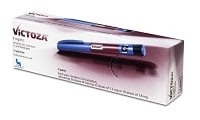 |
| Lilly CEO John Lechleiter |
When a new drug bursts upon an established drug class, the established players often wave away worries about market share. Sales for the whole class will grow, they say, because we'll have one more company on the street promoting it.
Sometimes that's true.
And when it comes to Eli Lilly's ($LLY) Trulicity, the brand-new GLP-1 diabetes treatment, even Lilly says so. As CEO John Lechleiter said during the company's third-quarter earnings call, "We're excited to enter the GLP-1 market with Trulicity, and we believe this product can be a catalyst for growth of the class."
Those were welcome words at Novo Nordisk ($NVO), which dominates the GLP-1 world with its drug Victoza. That product now owns 72% of the GLP-1 market in the U.S., up from 69% at the end of 2013, the company says.
"I don't think we should expect any major changes in market dynamics with the launch of Trulicity," President and COO Kåre Schultz said during the call. "Hopefully we will see an increase in the total volume of GLP-1 use in the U.S. GLP-1 is a very attractive therapy for Type 2 diabetes, and if your competitor is able to bring more patients into the GLP-1 segment that would only be good for patients.
"So we expect that Trulicity will more expand the market than directly take market share away from Victoza."
AstraZeneca ($AZN), one of the market's other competitors, with two forms of exanatide, the short-acting Byetta and long-acting Bydureon. The company launched a new pen injector this year, and has seen a bump in prescriptions since. GlaxoSmithKline ($GSK), meanwhile, won approval for its once-weekly injectable Tanzeum, but its study data isn't as persuasive as Trulicity's.
The GLP-1 class had been steadily adding market share since the drugs first launched, with its piece of the diabetes market standing at 6.9% globally at the end of 2013, up from 5.9% in 2012. Until, that is, a study last year flagged a potential increase in the risk of pancreatitis, with drugs that act on a hormone called incretin; that includes GLP-1 drugs and the rival DPP-4 class.
GLP-1 share growth slowed. Later in the year, European regulators said they weren't too concerned about the new study, because of some "limitations" and "potential sources of bias" in the research. A week after that, the FDA said much the same thing. And then, in February, in the New England Journal of Medicine, the FDA and the European Medicines Agency said they'd reviewed data on the incretin mimetics, and found little evidence that the drugs can trigger pancreatitis or pancreatic cancer.
Critics still have their doubts. But growth in the GLP-1 class picked back up this year, as AstraZeneca CEO Pascal Soriot told analysts last week. "During the last two quarters we have seen an acceleration of [total prescription growth,]" Soriot said, noting that the "slowing rate of growth" has now reversed.
 Novo and AstraZeneca will have a bit of a short-term safety cushion in any case. Lilly's diabetes chief, Enrique Conterno, said the company is working on Medicare coverage for Trulicity now, but it won't likely happen till 2016. And in 25% of the commercial market, Trulicity will be second in line, with patients ordered to try another GLP-1 drug first before moving to Trulicity.
Novo and AstraZeneca will have a bit of a short-term safety cushion in any case. Lilly's diabetes chief, Enrique Conterno, said the company is working on Medicare coverage for Trulicity now, but it won't likely happen till 2016. And in 25% of the commercial market, Trulicity will be second in line, with patients ordered to try another GLP-1 drug first before moving to Trulicity.
But as time goes on, all three of Trulicity's GLP-1 competitors will have their fingers crossed that the market-growth thesis bears out. Analysts have said that Lilly's Trulicity could grab one-third of the GLP-1 business, leaving the dominant Victoza to duke it out with AZ and Glaxo for the remaining chunk.
- read the Lilly release
Special Report: Top 10 best-selling diabetes drugs of 2013